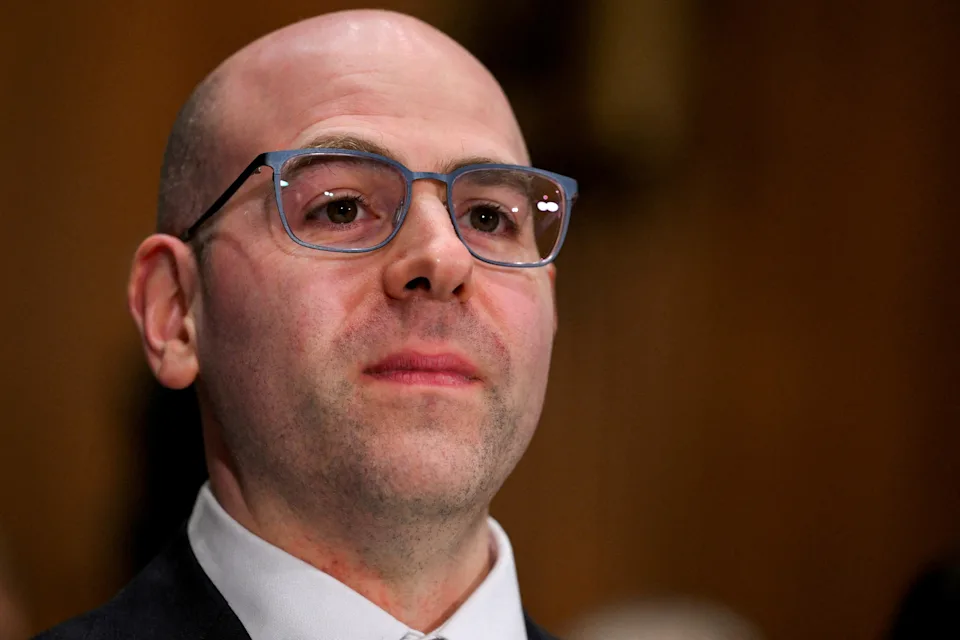Fed officials are still split about how much to cut interest rates as the government shutdown deprives policymakers of key data, with some worried more about inflation and others more concerned about the job market.
The newest Fed governor appointed by President Trump, Stephen Miran, reiterated Tuesday that he wants to reach a so-called neutral level on interest rates much faster than his colleagues at the central bank. Neutral is a level designed to neither boost nor slow economic growth.
“I do think that the neutral rate has come down relative to a year ago,” Miran said during a conversation at the Managed Funds Association Policy Outlook 2025 conference. “That makes monetary policy more restrictive than a couple quarters ago.”
“Additional restrictiveness of monetary policy poses some risks going forward,” he added, because “with some lags to policy you would expect the economy to weaken. So in the near term, I’m not very pessimistic at all about the economy, but I do see some risks lurking there if we don’t adjust policy.”
One voice arguing instead for more focus on inflation is Kansas City Fed president Jeff Schmid, who said Monday night that he thinks the current levels of interest rates are “slightly restricting” the economy, which he said is the “right place to be.”
The Fed has a dual mandate to maintain price stability and maximize employment.
“With inflation still too high, monetary policy should lean against demand growth to allow the space for supply to grow and relieve price pressures in the economy,” Schmid added in a speech in Kansas City.
The rate debate within the Fed has only intensified in the weeks since the last meeting, as policymakers go public with their views on the path ahead for monetary policy.
On Sept. 17, Fed policymakers offered a median estimate of two more cuts in 2025, although there was widespread divergence among the individual policymakers about those predictions. Miran openly disagreed with the quarter-point cut, saying it should have been larger.
Since that meeting, Miran has repeatedly called for deeper cuts, saying the Fed’s current level poses risks to the US economy. He has penciled in five more rate cuts this year.
Miran said Tuesday he expects housing inflation to come down as falling rents are factored into measures of inflation with a lag. Housing accounts for the largest part of the Consumer Price Index, but not the Fed’s most favored inflation gauge, the Personal Consumption Expenditures index.
Schmid noted that prices of durable goods, such as washing machines, refrigerators, and televisions, are increasing and that outside of the pandemic, prices of durable goods have declined consistently for the past three decades.
At the same time, Schmid pointed to increases in the prices of services — haircuts to electricity to landscaping — of 3.5% in recent months, well above the Fed’s 2% target.
What also worries Schmid is that price increases are becoming more widespread. At the start of the year, 70% of consumption categories reported price increases, he said. By August, prices in almost 80% of categories were increasing.
Schmid said the Fed “must” maintain its credibility on inflation. He added that he will remain data-dependent, but with the government shutdown, he is relying on alternative private sector data on the job market and inflation, as well as data collected by the Kansas City Fed through surveys.
Miran, on the other hand, said private sector data is not a “sufficient replacement” for the government data.
“During this period of the government shutdown we are deprived of most of the data that we would need to be making monetary policy,” he added.
He remains optimistic, however, that the government will reopen in time for the Fed to make its next rate decision at its meeting on Oct. 28-29.
Another Fed official, Minneapolis Fed president Neel Kashkari, sounded concerned Tuesday about both inflation and the labor market.
He said that economic data is sending stagflationary signals as the job market is slowing and inflation is sticking around 3%.
“So the big question is will tariff inflation be short-lived or sticky?” Kashkari said. “It’s too soon to reach a firm conclusion.”

